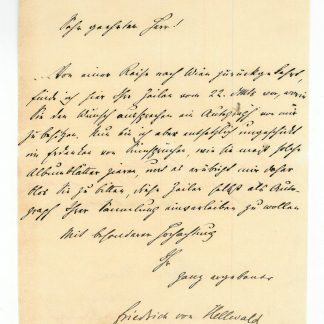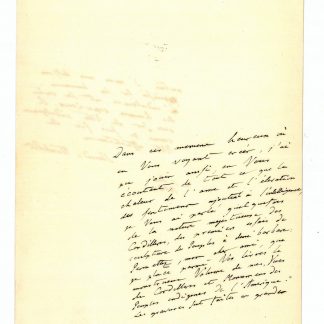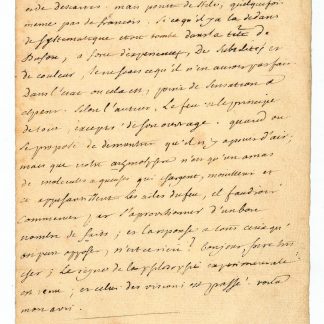Vladimir Nabokov at the Harvard Museum of Comparative Zoology
Autograph letter signed ("V. Nabokov").
8vo. 1 p.
€ 7,500.00
To the American entomologist George Franclemont concerning the comparison and identification of butterfly specimens: "Dear Dr Franclemont, your "Shawville, Pa[pillio]" lab[eled] 'Keutzingaria' is quite similar to specimens we have, also placed (incorrectly, I think) under that name, from Illinois, Maine and Nova Scotia, your 'Pittsburg, Pa.' lab. 'purpuraria' is extremely close (perhaps a trifle paler limbally) to our 'Packard type' specimen of Keutzingaria, from Maryland, your 'Pittsburg, Pa.' lab. 'nigrescaria' can be easily matched by specimens from Ill. and Maine in our series under that name. I am not returning the specimens until I hear from you - perhaps there are some other comparisons you might want me to make".
During his years as lecturer of comparative literature and Russian at Wellesley College, Massachusetts, from 1941 to 1948, Nabokov also pursued his scientific passion for butterflies, working as the de facto curator of lepidoptery at Harvard's Museum of Comparative Zoology. As a lepidopterist, Nabokov specialized in the Polyommatini tribe of the Lycaenidae family, on which he became an internationally recognized expert. The letter bears beautiful testimony to Nabokov's scientific work at the Harvard Museum.
John George Franclemont (1912-94) served in the Pacific theatre of WWII as an expert in the eradication of mosquitoes. He used his military deployment for entomological research and pursued a scientific career after the war. From 1947 to 1952, Franclemont worked in the Bureau of Entomology and Plant Quarantine in Washington, moving on to become a professor of entomology at Cornell (1953-77), where Vladimir Nabokov was his colleague. Franclemont donated his entomological collection of more than 35,000 specimens to Cornell University.
On stationery with printed letterhead of the Museum of Comparative Zoology. Traces of folds. With a minor rust stain and two holes from a staple.






